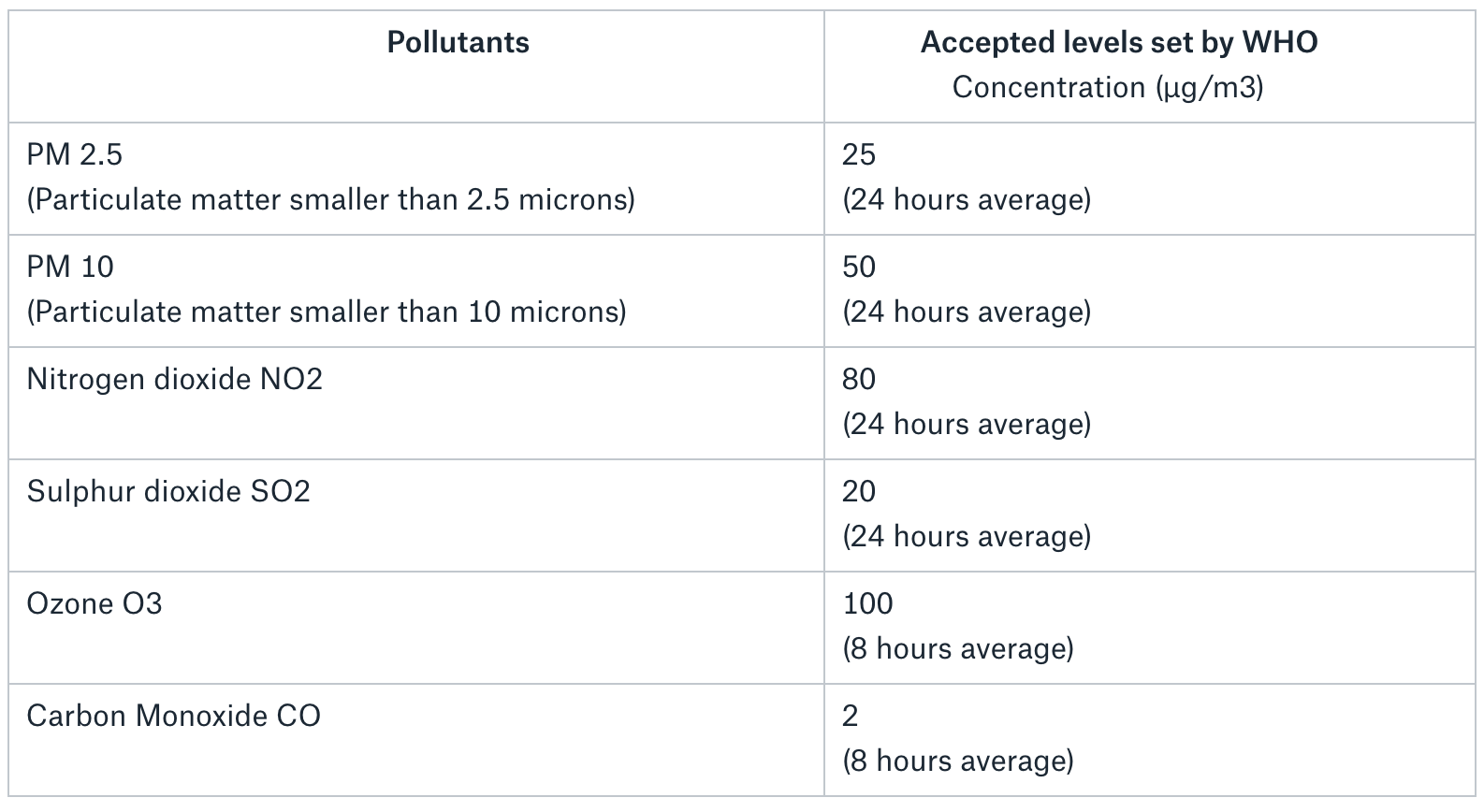A short guide about the air quality
January 15, 2018•704 words
Few things everyone should know about the air we breath.

Ever experienced irritation in eyes and throat while fighting your way through traffic or seen smog hovering over the city from your balcony?.
The rising pollution in our city is causing respiratory problems and even premature death.
92% of the world’s population lives in places where air quality levels exceed WHO limits— Source
The pollutants in the air can be in the form of solid, liquid and gas. Lets discuss the major pollutants in air.
SOLID
Particulate Matter (PM)
Tiny pieces of solid matter in air. Originates from road dust, construction sites, vehicle exhausts, industrial sites, unpaved roads.
They vary in size.
- Particles larger than 10 micrometers/microns are generally filtered out of the body through nose and throat. Nose hair diameter is more than 30microns, hence can only block larger particles.
- Particles smaller than 10 micrometers/microns can be inhaled into the deepest parts of the lungs.
- Fine particles smaller than 2.5 micrometers are small enough to pass from lungs into the blood supply.
Its recommended to wear masks that block even the tiniest particles upto 1 microns.
GASES
Carbon Monoxide CO
- Carbon monoxide is dangerous to humans, once inhaled it competes with oxygen by attaching on to haemoglobin in red blood cells and starving vital organs such as the brain, nervous system tissues and the heart of oxygen, reducing their ability to work properly
- The biggest sources of carbon monoxide comes from vehicles, especially when they are moving slowly or when the engine is idle.
- Incomplete combustion of carbon results in the production of carbon monoxide
Sulphure dioxide SO2
- If inhaled causes breathing difficulties, leads to acid rain when it reacts with moisture in air.
- Formed during burning of fuels containing sulphur like coal and oil by industrial activities.
Nitrogen dioxide NO2
- Causes respiratory problems and coughing, colds, flu, bronchitis.
- Most of the nitrogen dioxide in urban areas comes from vehicular emissions. Studies show that NO2 peaks coincides with traffic peaks.
- Vehicles, industries, waste-burning, coal-fired power plants are the major sources.
Measures that we can take.
We need to take necessary safeguards to protect our health until our government takes strict measures and implements policies that lead to better air quality.
Measure 1 — Being informed.
How to find out air quality near you?
There are various apps that show air quality figures in real time.
Currently cities have limited air quality monitoring stations, so you may not find air quality in your locality.
Apps and several air monitoring systems usually show the Air Quality Index (AQI).

An air quality index (AQI) is a number used by government agencies to communicate to the public how polluted the air currently is or how polluted it is forecast to become. As the AQI increases, an increasingly large percentage of the population is likely to experience increasingly severe adverse health effects.
While looking at the current levels of PM10, PM2.5, NO2, SO2, O3, it is important to know the accepted levels of pollutants set by World health organisation WHO or your government (standards set by India).

Measure 2— Masks and air conditioners, purifiers
- Invest in good quality pollution masks that can block even the tiniest particles PM2.5. Masks on Amazon.com
Equip your room with air conditioners or air purifiers, and stay indoors if the AQI is at unhealthy levels.
Avoid going to morning walks or outdoor exercises during smog, as we inhale more air during physical activities.
Measure 3 — Create awareness
Let your friends and families know about this alarming situation, make sure they are carrying masks when leaving home.
Donate masks if you can to the less fortunates you see on the road. Hand a mask to the traffic police if they are not wearing one.
Stop others from burning garbage agriculture wastes.
Communicate with local/state/central authorities through social networks and let them know that you care about this issue and are looking forward to the steps they are taking.